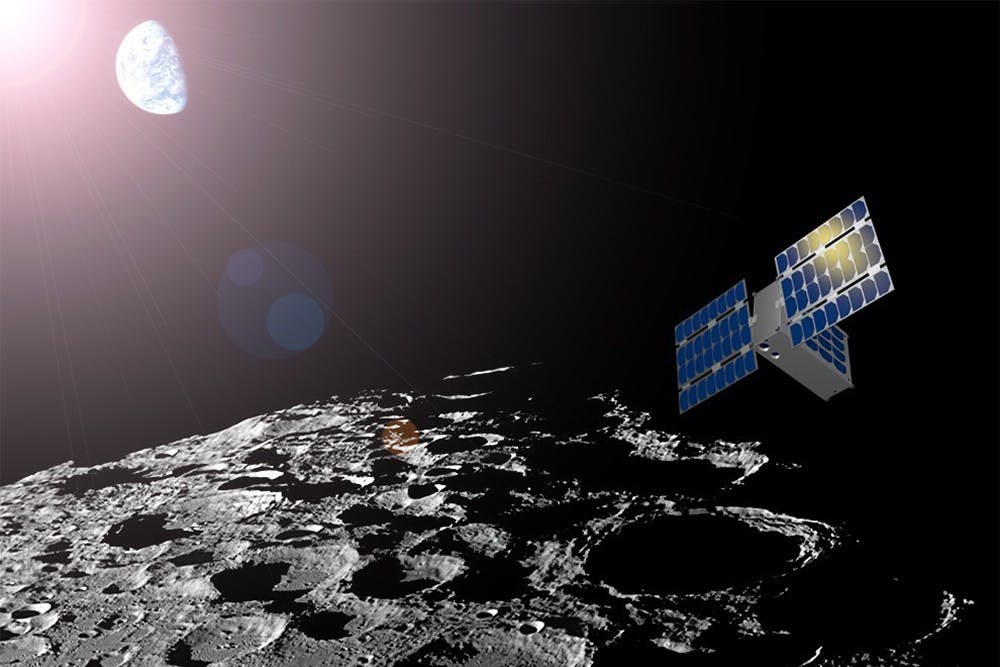For the first time in the University's history, ASU's School of Earth and Science Exploration will lead a lunar spacecraft mission starting in October.
The mission will send a small, shoe box-sized spacecraft known as a CubeSat to the moon to create a detailed map of the moon’s polar ice and provide more information about the water deposits that previous missions have identified.
Craig Hardgrove, a postdoctoral research associate at the School of Earth and Space Exploration, proposed the mission to NASA this year and will lead the school’s team as principal investigator.
The team hopes to learn more about water on the moon so that scientists may know how to access the life source during future missions, Hardgrove said.
“This prepares us for sending humans back to the moon,” Hardgrove said. “We’re going to want to find water, and we’ll want to know where it is and how much of it there is so that humans can use it for fuel or for drinking.”
A team of 15 to 20 ASU scientists will develop the spacecraft, which they call the Lunar Polar Hydrogen Mapper or “LunaH-Map,” in Tempe and carry out the mission in partnership with a significant number of commercial and government partners.
The cumulative mission, including preparation, launch and information retrieval, will take approximately five years to complete once it begins in October.
Although NASA has partnered with ASU for several major space projects since the ‘70s and three in 2015 alone, the lunar mission will be the first planetary spacecraft mission led entirely by the University.
“It’s the first mission that really came out of ASU and the School of Earth and Space Exploration,” Hardgrove said. “NASA agreed that this is a great idea and picked it as opposed to saying ‘we already have the idea, and here’s what you’re going to do.’”
CubeSat missions are a modern practice, with the first launch in June of 2003, and Hardgrove said ASU is the right setting for this type of mission.
“CubeSats are a really new way of doing science and this is one of the first missions that NASA is funding to do science on a CubeSat,” he said. “I think that looking to a place like ASU that is doing these things in innovative ways makes a lot of sense.”
CORRECTION: Due to a reporting error, a previous version of this article incorrectly stated Hardgrove's title and the extent of the partnership. This version has been updated with the correct information. We regret the error.
Related Links:
Marston Exploration Theater showcases 3-D astronomy shows
ASU researchers: Moon had volcano activity as recent as 50 million years ago
Reach the assistant news editor at aplante@asu.edu or follow @aimeenplante on Twitter
Like The State Press on Facebook and follow @statepress on Twitter.




